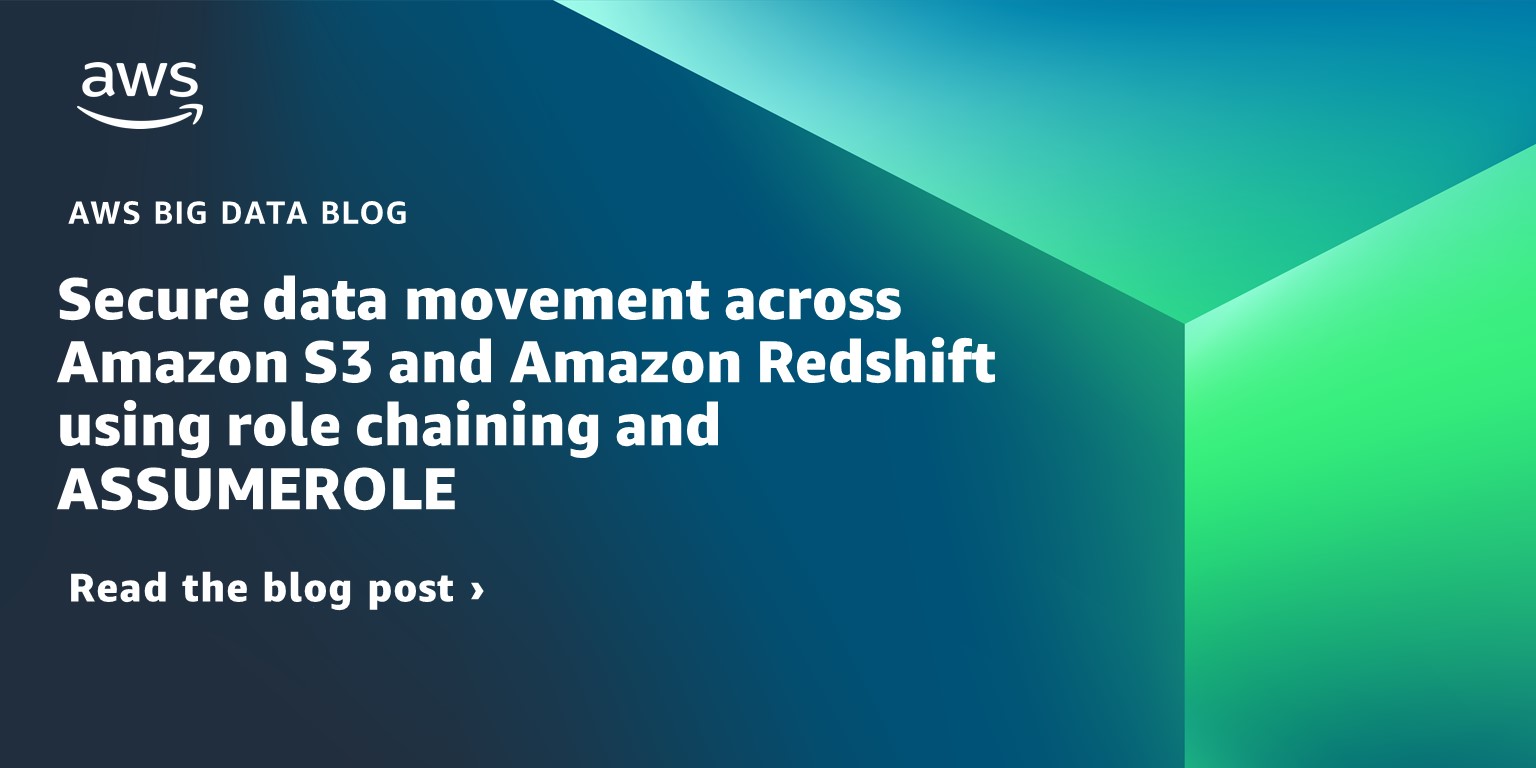AWS Big Data Blog
Use Amazon Kinesis Data Firehose to extract data insights with Coralogix
February 9, 2024: Amazon Kinesis Data Firehose has been renamed to Amazon Data Firehose. Read the AWS What’s New post to learn more. This is a guest blog post co-written by Tal Knopf at Coralogix. Digital data is expanding exponentially, and the existing limitations to store and analyze it are constantly being challenged and overcome. […]
Top Amazon QuickSight features and updates launched Q1 2022
Amazon QuickSight is a serverless, cloud-based business intelligence (BI) service that brings data insights to your teams and end users through machine learning (ML) powered dashboards and data visualizations, which can be access via QuickSight or embedded in apps and portals that your users access. This post shares the top QuickSight features and updates launched […]
Access Apache Livy using a Network Load Balancer on a Kerberos-enabled Amazon EMR cluster
Amazon EMR is a cloud big data platform for running large-scale distributed data processing jobs, interactive SQL queries, and machine learning (ML) applications using open-source analytics frameworks such as Apache Spark, Apache Hive, and Presto. Amazon EMR supports Kerberos for authentication; you can enable Kerberos on Amazon EMR and put the cluster in a private […]
Secure data movement across Amazon S3 and Amazon Redshift using role chaining and ASSUMEROLE
Data lakes use a ring of purpose-built data services around a central data lake. Data needs to move between these services and data stores easily and securely. The following are some examples of such services: Amazon Simple Storage Service (Amazon S3), which stores structured, unstructured, and semi-structured data Amazon Redshift, a fully managed, petabyte-scale data […]
Real-time analytics with Amazon Redshift streaming ingestion
August 30, 2023: Amazon Kinesis Data Analytics has been renamed to Amazon Managed Service for Apache Flink. Read the announcement in the AWS News Blog and learn more. Amazon Redshift is a fast, scalable, secure, and fully managed cloud data warehouse that makes it simple and cost-effective to analyze all your data using standard SQL. […]
Amazon EMR on Amazon EKS provides up to 61% lower costs and up to 68% performance improvement for Spark workloads
Amazon EMR on Amazon EKS is a deployment option offered by Amazon EMR that enables you to run Apache Spark applications on Amazon Elastic Kubernetes Service (Amazon EKS) in a cost-effective manner. It uses the EMR runtime for Apache Spark to increase performance so that your jobs run faster and cost less. In our benchmark […]
Build a modern data architecture and data mesh pattern at scale using AWS Lake Formation tag-based access control
September 2024: This post was reviewed and updated to use version 4 of the settings for AWS Lake Formation, which allows for cross-account grants with AWS Resource Access Manager and hybrid access mode. Customers are exploring building a data mesh on their AWS platform using AWS Lake Formation and sharing their data lakes across the […]
Modernize your healthcare clinical quality data repositories with Amazon Redshift Data Vault
With the shift to value-based care, tapping data to its fullest to improve patient satisfaction tops the priority of healthcare executives everywhere. To achieve this, reliance on key technology relevant to their sphere is a must. This is where data lakes can help. A data lake is an architecture that can assist providers in storing, […]
How SailPoint solved scaling issues by migrating legacy big data applications to Amazon EMR on Amazon EKS
This post is co-written with Richard Li from SailPoint. SailPoint Technologies is an identity security company based in Austin, TX. Its software as a service (SaaS) solutions support identity governance operations in regulated industries such as healthcare, government, and higher education. SailPoint distinguishes multiple aspects of identity as individual identity security services, including cloud governance, […]
Author AWS Glue jobs with PyCharm using AWS Glue interactive sessions
Data lakes, business intelligence, operational analytics, and data warehousing share a common core characteristic—the ability to extract, transform, and load (ETL) data for analytics. Since its launch in 2017, AWS Glue has provided serverless data integration service that makes it easy to discover, prepare, and combine data for analytics, machine learning, and application development. AWS […]









